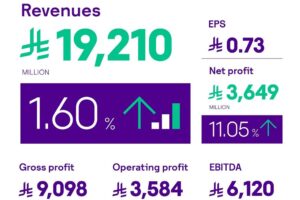~ How telco aggregation is changing the industry ~
The telecommunications industry is experiencing a much-needed shift, driven by the aggregation of telcos. This aggregation, characterized by mergers and acquisitions, is reshaping the landscape of telecoms infrastructure, businesses and the market as a whole. Here, Sam Dunscombe, head of growth at BSS telecoms software provider Mobilise, shares his predictions on how this could take shape.
Primarily, telcos are merging to gain a competitive edge in the rapidly evolving telecommunications landscape. The aggregation trend allows companies to leverage their respective strengths, resources and customer bases. Mergers enable telcos to expand their network coverage, enhance their service offerings and tap into new markets. One of the key elements driving this aggregation of network operators is convergence. This is the focus on offering customer benefits for taking both a fixed broadband type service, alongside a mobile service, with a single operator.
The recent announcement of Vodafone and Three’s merger intentions has served as a stark reminder of how telecoms is changing. Convergence is becoming increasingly more commonplace as businesses strive to layer multiple service offerings together to diversify the way they engage consumers and, ultimately, generate revenue.
A FWA future
While the UK’s most recent mergers — BT Openreach and EE, and Virgin Media and O2 — follow the traditional telecoms convergence proposition and include both a fixed and mobile network provider, the merge of Vodafone and Three, neither of which operate their own fixed network, signifies a shift towards a different model.

Instead of following the traditional view of convergence, the Vodafone Three merger is a sure sign of a shift toward fixed wireless access (FWA). FWA provides high-speed broadband connectivity using wireless technologies, eliminating the need for traditional fixed-line infrastructure. Telcos are already adopting FWA to address the challenges of bridging the digital divide in remote and underserved areas, where laying physical cables can be expensive and time-consuming, and not commercially viable.
In the UK, BT Openreach and Virgin dominate the fixed network market so, realistically, more mergers like that of Vodafone and Three are likely to emerge. The aggregation of telcos that don’t own a fixed network will mean more emphasis on FWA is inevitable. As a result, it will mean that FWA-focused networks will rely on their greater overall share of the mobile market and the network superiority this offers them, and will leverage this over fixed network service offerings.
Upscaling the tech side
Beyond the shift towards FWA, the aggregation of telcos is driving cross-industry consolidation, sparking their evolution into technology companies, or techcos. Many telcos are shifting their focus from traditional telecommunications services to the expansion of their presence in the tech sector.
The aggregation of telcos allows them to leverage their existing infrastructure, resources and technical expertise to introduce new services such as cloud computing, Internet of Things (IoT) solutions and digital entertainment platforms. This shift positions telcos as techcos, bridging the gap between the telecommunications and technology industries.
The traditional telco segment, especially in the UK, has developed rapidly over the last few decades. But more recently, its ROI potential is plateauing, especially with the ongoing challenges around 5G monetization, customer handset refresh cycles elongating and the crack down on the traditional subsidy model from the regulators. For telcos to remain profitable, and to ensure their activity remains valuable in the eyes of investors, a shift to techco is essential.
There are many examples of how this is already happening. Last year UAE-based telco Etisalat rebranded to e& to represent its shift in operating model and how changing consumer demands mean that telcos are expected to offer more than just telecoms services. Similarly, BT has taken a back seat in the BT EE consumer branding — a decision made in order to appeal to more tech-savvy consumers, since EE is perceived as a more modern, mobile-focus brand.
Becoming digital-first
To navigate this changing landscape, successfully merge and shift into the techco space, a telco should adopt a digital-first business model. What does this mean?
A digital-first company aims to connect in every way possible — it has undergone a successful digital transformation and uses all channels to ensure that the customer is at the forefront of all business decisions. According to a report by McKinsey, digital-first telcos are growing revenue at an average rate of 20 per cent, compared to three per cent for telcos still focus on traditional telecoms services. So, this digital shift puts traditional telcos in a favorable position to evolve into techcos.
Understandably, embarking on such systemic change is a challenge, especially for smaller telcos that may not have the resources or knowledge to implement it with confidence. Mobilise’s HERO is a flexible plug-and-play digital BSS platform that can be integrated into any system to offer a seamless, fully digital interface. Fully compliant with the TM Forum Open API Specifications, there are over 60 APIs that can be integrated into the front and back-end systems for functions including self-service and payments. Once in place, HERO ensure a telco is fully digital, ensuring the infrastructure is there to equip them for success.
The convergence of telcos is becoming more commonplace as companies strive to pool their resources in order to diversify their revenue channels. While we can already see how this is taking shape with the shift towards a FWA model but we’re likely to see more of this as further consolidation makes way for technological shift.












